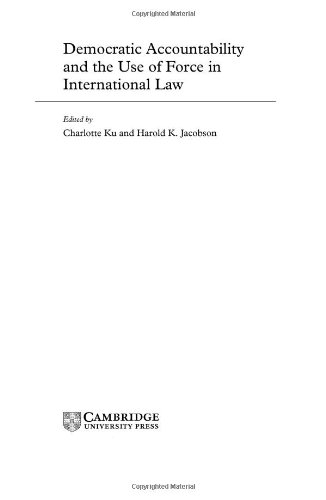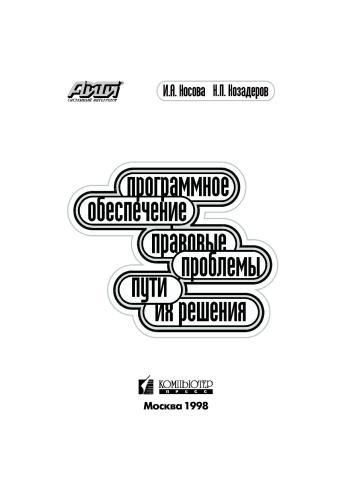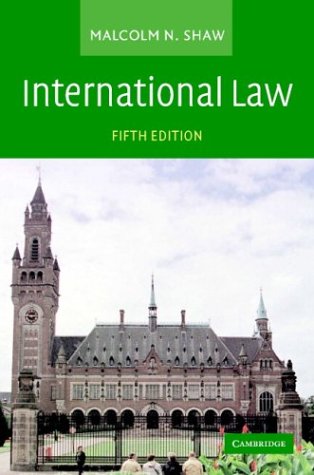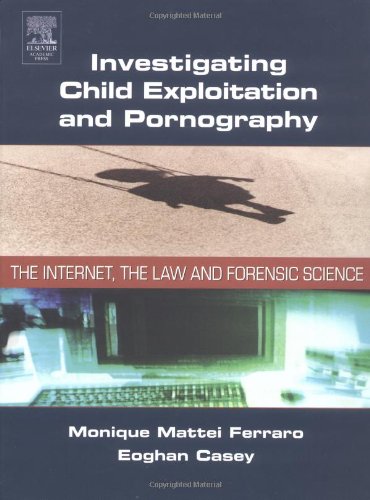Charlotte Ku, Harold K. Jacobson0521807476, 9780521807470, 9780511063879, 0521002079
Table of contents :
Cover……Page 1
Half-title……Page 3
Title……Page 5
Copyright……Page 6
Dedication……Page 7
Contents……Page 9
Figures……Page 11
Tables……Page 12
Notes on contributors……Page 13
Preface……Page 21
Disclaimer……Page 23
Abbreviations……Page 24
Part I Introduction……Page 29
1 Broaching the issues……Page 31
Tenets of democracy: participation in decision-making and accountability……Page 34
Using military forces under the auspices of international institutions: from proposals to practices……Page 41
The League of Nations……Page 42
The United Nations……Page 43
The North Atlantic Treaty……Page 46
Uses of military forces under international auspices……Page 47
Issues of democratic accountability……Page 53
International authorization to use military forces……Page 54
Democratic civilian control of military personnel and operations……Page 55
The framework for the analyses……Page 56
The nine countries……Page 57
The outline of the study……Page 59
Future prospects……Page 62
Part II The domestic and international context……Page 65
2 The interface of national constitutional systems with international law and institutions on using military forces………Page 67
Trends in constitutional control over the use of force in the seventeenth to twentieth centuries……Page 70
Collective security and collective self-defense: issues for the United States……Page 76
Developments in other countries……Page 79
Illustrative conflicts: constitutional issues in multinational military operations……Page 80
Constitutional considerations for particular countries……Page 84
Conclusion……Page 86
3 Domestic political factors and decisions to use military forces……Page 89
Political culture……Page 90
Leadership……Page 93
Contending political groups……Page 94
Budgetary commitments……Page 96
The military……Page 97
Mass media……Page 98
Public opinion……Page 99
Societal groups……Page 101
The impact of domestic political considerations by type of peace operation……Page 102
International pressures……Page 105
Domestic and international politics: changes over time……Page 106
Putting collective security into practice……Page 109
The League of Nations: an institutional legacy……Page 113
Filling security gaps during the Cold War……Page 115
Post-Cold War transitions……Page 118
Somalia……Page 122
Bosnia……Page 123
NATO and Kosovo……Page 125
Regional arrangements……Page 127
Conclusion: the United Nations and ad hoc multilateralism……Page 129
Introduction……Page 132
UN law: mandate and terms of reference……Page 135
Status-of-forces agreements and participation agreements……Page 136
The applicability of international humanitarian law to UN peace support operations……Page 137
The status of military personnel in NATO peace support operations……Page 142
Implementing the mandate……Page 145
Witnessing war crimes……Page 148
Summary and conclusions……Page 149
Part III Traditional contributors to international military operations……Page 153
Introduction……Page 155
Constitutional and legal situation……Page 156
Debates about peacekeeping and the use of force……Page 157
Traditional peacekeeping……Page 158
Force to ensure compliance with international mandates……Page 162
Peacekeeping with state-building……Page 166
Enforcement……Page 167
Canada’s continued commitment to international operations……Page 171
Conclusion……Page 179
7 Norway: political consensus and the problem of accountability……Page 182
Norwegian involvement abroad……Page 183
Traditional peacekeeping……Page 184
Peacekeeping to ensure compliance with international mandates……Page 186
Nordic cooperation in UN operations……Page 188
The uses of military forces and the politics of legality……Page 190
Legal constraints on the use of the military……Page 191
The UN, NATO, and the question of command……Page 193
The UN, NATO, and the question of mandates……Page 196
The two constellations of Norwegian foreign policy……Page 198
First constellation: sovereignty, security, and the UN……Page 199
Second constellation: human rights and humanitarian intervention……Page 200
Conclusion……Page 202
Why India matters in this study……Page 204
India as a postcolonial developing country……Page 205
India’s peacekeeping credentials……Page 206
International authorization……Page 207
Examples……Page 208
International authorization and democratic accountability……Page 212
The Sierra Leone crisis of May 2000……Page 214
National authorization……Page 216
Agencies in the decision-making process……Page 218
The decision-making process……Page 219
Civil–military relations……Page 222
The Indian armed forces……Page 223
Formal mechanisms……Page 226
Informal controls……Page 227
The Sri Lanka crisis of May 2000……Page 229
Conclusion……Page 231
Part IV Newcomers to international military operations……Page 233
Introduction……Page 235
The debate within a historical context……Page 236
Article 9 and the current official interpretation……Page 239
Different forms of military operations and Japanese participation……Page 241
International authorization and statutory requirements……Page 244
National authorization to use the SDF: parliamentary accountability……Page 246
Political accountability: bureaucrats vs. politicians……Page 249
Public accountability: the deliberative role of the Diet……Page 250
Civilian accountability: role of the military establishment……Page 254
Soldiers’ responsibility: compliance with humanitarian norms……Page 255
Conclusions……Page 256
Historical introduction……Page 259
Political background and constitutional framework for the 1994 judgment……Page 262
Political background……Page 263
Constitutional framework……Page 264
The political and military situation since 1998……Page 265
Authorization by the UN and NATO……Page 267
Conformity of authorization with international law……Page 268
Deriving the parliamentary authorization requirement……Page 269
The specifics of the approval requirement……Page 272
Authorizations in practice……Page 275
Safeguards for the civilian control of the military……Page 276
Civilian responsibility……Page 277
Military responsibility……Page 278
The question of democratic accountability: general conclusions……Page 279
Part V Permanent members of the UN Security Council……Page 283
Introduction……Page 285
Historical overview……Page 286
The Constitution……Page 291
The Constitutional Court……Page 294
The statute……Page 297
Official doctrine……Page 300
Practice of authorization of foreign deployments……Page 302
Concluding remarks……Page 306
Introduction……Page 308
An initial ambiguity……Page 310
A growing involvement……Page 311
French posture in the Security Council……Page 313
The unique features of the Security Council……Page 316
A key international role for the president……Page 317
French decision-making in time of crisis……Page 320
A limited role for the parliament……Page 322
Promoting the European Union as an actor in international military operations……Page 324
Conclusion……Page 326
The UK Constitution and military action……Page 328
The War Cabinet……Page 330
The United Kingdom and UN peace operations……Page 332
The United Kingdom and NATO……Page 335
Peacekeeping……Page 337
Enforcement actions to combat aggression……Page 338
Situations where force is used to ensure compliance with international mandates……Page 341
Concluding remarks……Page 347
The law governing use of force by the United States……Page 351
The Constitution……Page 352
The War Powers Resolution……Page 355
Party politics……Page 357
Public opinion……Page 360
Use of military forces under international institutions……Page 362
Military force structure, doctrine, and capability……Page 363
Requisitioning of forces……Page 366
Changing attitudes towards Article 43 agreements……Page 369
NATO……Page 370
Conclusion……Page 372
Part VI Conclusion……Page 375
15 Toward a mixed system of democratic accountability……Page 377
The record: steps toward establishing democratic accountability……Page 379
International authorization to use military forces……Page 380
National authorization to use military forces……Page 389
Civilian control, civilian responsibility, military responsibility……Page 397
An evolving mixed system……Page 403
Constructing a new order for maintaining democratic accountability while using military forces under international auspices……Page 406
References……Page 443
Index……Page 458







Reviews
There are no reviews yet.